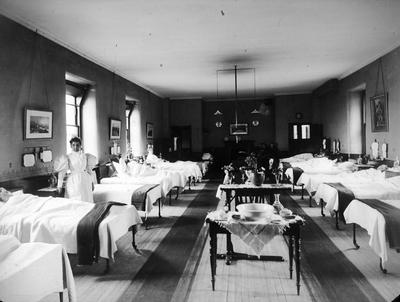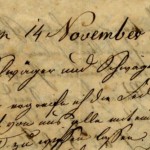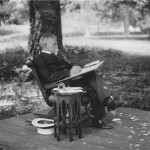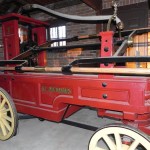Indianapolis' city hospital served as a military hospital during the civil war but only started its transformation into a modern hospital during the tenure of William Niles Wishard, in the 1880s.
In 1859, after decades of urging by prominent Indianapolis physician Dr. Livingston Dunlap, Indianapolis erected what would become its first modern hospital. Up to that point – in Indiana and across America – most medical care was administered in private homes.
While larger eastern and midwestern cities had, in the 1830s and 1840s, established almshouses to house the sick poor and pesthouses to confine the contagious victims of cholera and smallpox, Dunlap’s concept of an acute-care hospital was ahead of its time. The small frame building—located on a swampy site at the extreme northwest corner of Indianapolis—cost five times more than the city’s initial authorization.
In the meantime, the smallpox scare that brought the facility into existence had dissipated, insects swarmed the area, farm animals trampled the fence gates, and the roof already leaked. Any popular support that had existed for the project rapidly evaporated as prostitutes and derelicts moved in.
The 1861 outbreak of the Civil War, however, gave the City Hospital a new lease on life. The city eagerly gave the building to the federal government, which put it into use as a military hospital and operated it for the duration of the war. In 1866, the Indianapolis Common Council at last established City Hospital as a permanent institution, to be operated at city expense and governed by the Board of Health and Charities, which in turn hired the medical staff.
In the years that followed, the hospital saw few improvements, primarily treated the indigent, and spent more than it received in patient payments. Public enthusiasm waned once again.
This situation would change in 1879, when William Niles Wishard – after whom the hospital would be named in 1975 – ushered in an eight-year era that would come to define the hospital far into the future. His term coincided with the beginning of the scientific medical revolution and thus marked the start of a pivotal period in City Hospital’s history.
The banner of science brought hospital expansion, the rise of surgery as a viable treatment, and medical professionalization throughout the country. Wishard’s tenure reflected all three of these broad national movements. It was Wishard’s embrace of change that led the institution to become a more respectable, modern general hospital.
Remarkably, a mix of innovative leadership, unusually high levels of private philanthropy, and adaptability has helped keep a major city’s safety-net public hospital viable into the twenty-first century. Wishard continues to provide the majority of Indianapolis’s charity healthcare and, after Sidney and Lois Eskenazi’s lead gift of $40 million, is projected to emerge as Eskenazi Health in 2014.
Source: Kathi Badertscher, “A New Wishard Is On the Way,” IMH December 2012
A Moment of Indiana History is a production of WFIU Public Radio in partnership with the Indiana Public Broadcasting Stations. Research support comes from Indiana Magazine of History published by the Indiana University Department of History.























